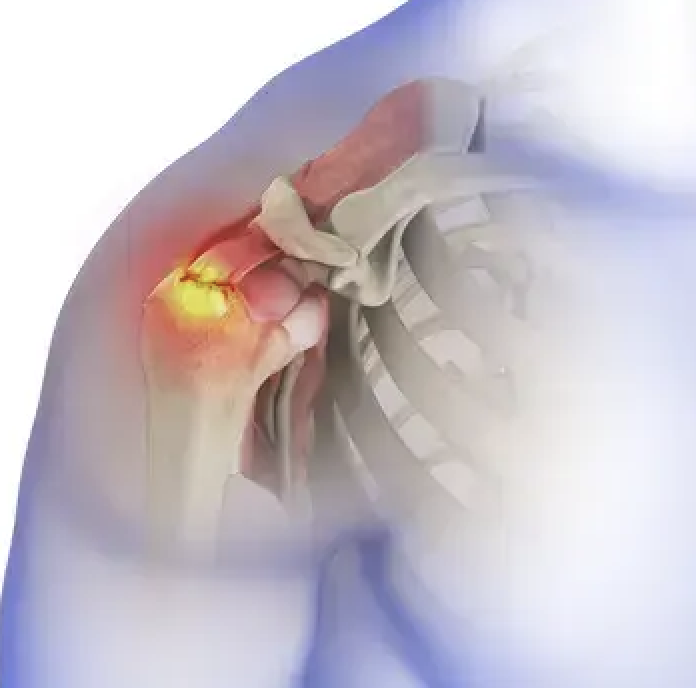Shoulder Conditions
About the Shoulder
The shoulder is a ball and socket joint, and tremendously important for your ability to place your arm and hand in space. There are a number of key structures in the shoulder, which when injured result in pain or dysfunction.
The Cartilage - Osteoarthritis
In order for the shoulder joint to move freely, the ball (the humerus) must move smoothly within the socket (the glenoid). This friction free movement is facilitated by cartilage – which covers the bone. Unfortunately, cartilage does not regenerate very well, and over time natural wear and tear results in thinning, and eventual loss of the cartilage in your shoulder. This leads to bone on bone articulation, and is known as osteoarthritis. It leads to both a painful and stiff shoulder. There are non-operative ways to treat this such as steroid injections and physiotherapy, as well as surgical treatments like joint replacement – either anatomic arthroplasty or reverse arthroplasty.
The Labrum – Instability
As a ball and socket joint, the shoulder can move in any direction. However, this if this freedom of movement is excessive, it can lead to shoulder instability and dislocation. The labrum is a soft tissue structure that deepens the socket (or glenoid) of the shoulder, and helps to prevent the shoulder from dislocating. It is usually injured in traumatic accidents such as contact sports, and may result in ongoing instability and dislocations if not treated. Non operative treatment for shoulder dislocations include physiotherapy and shoulder strengthening exercises while surgical treatment can include key hole or arthroscopic stabilisations or open stabilisations (Latarjet).
The Rotator Cuff – Cuff Tears
In order to elevate and rotate your shoulder, various muscles pull on the bones to facilitate movement. The most important of these in the shoulder are a group of four muscles commonly termed the “rotator cuff”. The tendons of these muscles are how they attach to the bones, and it is the tendons which will tear off. However, not all rotator cuff tears are the same, and it is quite common to have asymptomatic rotator cuff tears, particularly with aging. Tears that are problematic will generally be both painful and lead to weakness of the shoulder. Non operative treatment for these is typically steroid injections and physiotherapy, but tears will not heal without surgical intervention. The majority of these tears can be treated with keyhole or arthroscopic repair, but in severe cases, joint replacement may need to be considered.
The Bursa – Subacromial Bursitis or Impingement
A bursa is fluid filled sac, which helps to lubricate the movement of bones or joints in the body. In the shoulder, the subacromial bursa is one that sits just above the shoulder joint and can be commonly irritated by repeated movement. This leads to pain – particularly with overhead movement. Treatment can include steroid injections, but surgical decompression with a keyhole operation is also an effective form of treatment if this fails.
The Biceps Tendon - Tendinopathy
The biceps muscle has two tendons it arises from, and one of them (the long head) goes straight through the shoulder joint. In this position, it can get squashed by the ball and socket of the shoulder joint repeatedly, and this can lead to inflammation, tearing and even rupture of this tendon. It can be treated with steroid injections, but if this fails, then surgical treatment includes either release, or re-routing of the tendon to prevent impingement
The Capsule – Frozen Shoulder
In some patients, the shoulder joint and it’s capsule are prone to inflammation. Sometimes, only a small insult (like wearing a sling for a prolonged period, or a minor trauma) is required to trigger a cascade of inflammatory mediators and leads to a condition called adhesive capsulitis or frozen shoulder. Usually, although early on it is extremely painful, frozen shoulder will get better over a period of 2-5 years. Steroid injections can help to reduce symptoms and speed up the return of movement to the shoulder but if this fails, surgery to release the shoulder joint can be considered. Diabetics are particulary prone to this condition.



